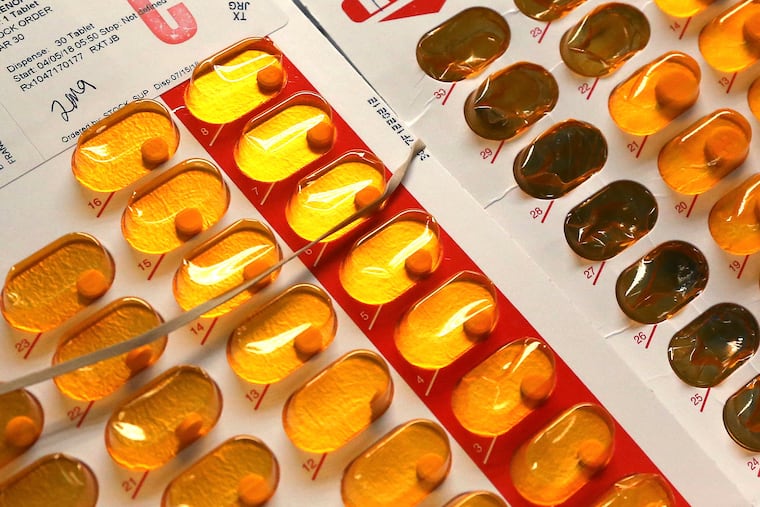Fewer new prescriptions for addiction treatment drug were written during the pandemic, as overdose deaths have spiked
Researchers estimated that as many as 36,954 people would have started buprenorphine treatment between March and August of 2020, were it not for the pandemic.

Even as overdose deaths rose nationwide last year, new prescriptions for buprenorphine -- widely considered the gold standard for opioid addiction treatment -- were lower than usual, a Princeton University study has found.
The study, published recently in JAMA Network Open, projected what prescribing levels for buprenorphine and opioid painkillers would have been in 2020 had the COVID-19 pandemic not taken place, based on prescribing data from previous years.
Researchers compared those projections with the actual prescriptions for buprenorphine and opioid painkillers between March and August of 2020. They also looked at whether those prescriptions went to new patients or patients already in treatment.
They found that, while patients who were already receiving opioids or buprenorphine largely managed to keep their prescriptions through the pandemic, prescriptions for new patients dropped in the early days of the pandemic, as the crisis upended medical treatment around the country.
The study didn’t look at the correlation between a lack of access to buprenorphine treatment and the rising number of overdoses around the country -- including in Philadelphia -- during the pandemic. But, given that rise, the missed opportunities for treatment are alarming, researchers said.
“This reduction in treatment may have been associated with the increase in overdose deaths during the pandemic,” the study reads.
In Philadelphia, though the yearly count has not been finalized, overdose deaths in 2020 are on track to surpass the 1,217 fatal overdoses seen in 2017, the highest drug death toll on record. Nationwide, more than 87,000 people died in the 12-month period ending in September 2020, another record toll.
New prescriptions for opioid painkillers eventually rebounded to projected levels. But new buprenorphine prescriptions stayed low -- dropping by 18% below projected levels, and only returning to about 90% of projected levels by August.
In the early days of the pandemic, the federal government relaxed restrictions around buprenorphine and methadone -- another widely used opioid-based addiction treatment medication -- to promote social distancing and reduce the spread of the virus.
Patients were permitted to start buprenorphine treatment through telemedicine -- previously, they had been required to see a doctor in person. Many methadone patients were allowed to take home multiple doses of their medication instead of taking it each day at a clinic, previously a privilege reserved for only a few.
But new buprenorphine prescriptions still lagged, according to the study, and the drop was particularly pronounced in the Northeast. Nationwide, researchers estimated that as many as 36,954 people would have started buprenorphine treatment between March and August of 2020 were it not for the pandemic.
“It may be easier to engage existing patients via telemedicine than to serve new ones,” the study reads. “Large pandemic-related reductions in visits to the emergency department may also have reduced the rate of initiation of new buprenorphine treatment of [opioid use disorder].”
Economist Janet Currie, the study’s lead author and the head of Princeton’s Center for Health and Wellbeing, said providers may also have been nervous about taking on new patients they could not meet in person during the pandemic, and more comfortable treating patients they already knew through telemedicine.
But, she added, “the really big picture is that it’s so hard to get effective treatment compared to how easy it is to get opioid [painkillers].”
Currie said she hopes that even more recent relaxations of federal regulations surrounding buprenorphine will help more patients get into treatment. New guidelines from the Department of Health and Human Services have exempted some physicians and other medical professionals from having to undergo special training to prescribe buprenorphine -- a measure that advocates had long decried as onerous and unnecessary.
“You don’t have any special training to prescribe opioids,” she said. “The whole regulatory framework has been really crazy. One possible positive thing that might come out of the COVID pandemic is changes to those restrictive rules on buprenorphine practice. Allowing more people to treat patients is a really important step.”